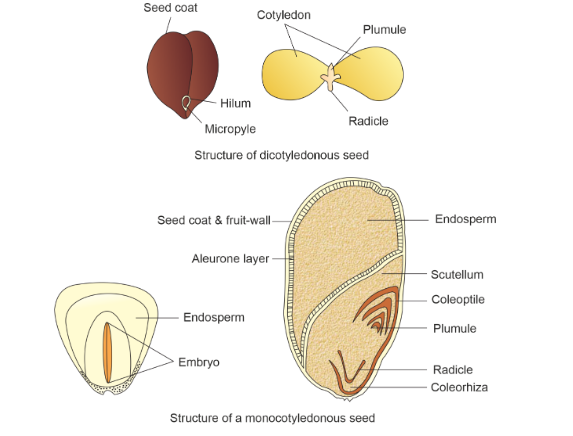Table of Contents
Plants are a diverse group of living organisms that play a crucial role in the Earth’s ecosystem. One of the key characteristics used to categorize and understand plants is the presence or absence of cotyledons, which are embryonic leaves present in the seed. Based on the number of cotyledons, plants are divided into two major groups: monocotyledons (monocots) and dicotyledons (dicots). In this article, we will explore the significant differences between these two plant groups.

Cotyledon Number
Monocots: Monocotyledons have only one cotyledon in their seeds. These cotyledons usually appear as a single leaf during germination.
Dicots: Dicotyledons have two cotyledons in their seeds. These cotyledons generally emerge as a pair of leaves during germination.
Leaf Venation
Monocots: The veins in the leaves of monocots are usually parallel, forming a pattern that runs lengthwise along the leaf.
Dicots: The veins in the leaves of dicots form a branched network, creating a reticulate or net-like pattern.
Root System
Monocots: Monocots typically have a fibrous root system. These roots are relatively thin, branching out extensively in all directions.
Dicots: Dicots often possess a taproot system. The primary root grows vertically downward, and smaller lateral roots branch out from it.
Flower Parts
Monocots: Monocot flowers typically have floral parts in multiples of three. For instance, they might have three or six petals, three sepals, and so on.
Dicots: Dicot flowers usually have floral parts in multiples of four or five. They might have four or five petals, sepals, stamens, etc.
Stem Vascular Bundles
Monocots: In the stems of monocots, vascular bundles are scattered throughout the stem’s ground tissue.
Dicots: Dicot stems have vascular bundles arranged in a ring, forming a distinct cambium layer between the xylem and phloem.
Examples
Monocots: Orchids, lilies, corn, wheat.
Dicots: Roses, sunflowers, tomatoes, gram, peas.
Frequently Asked Questions
Do monocots and dicots have different seed structures?
Yes, they do. Monocot seeds generally have a single cotyledon, while dicot seeds have two cotyledons.
How do the root systems of dicots and monocots differ?
Dicots generally have a taproot system, with a primary root growing vertically and smaller lateral roots branching from it. Monocots, on the other hand, typically have a fibrous root system with numerous thin roots branching in all directions from the base of the stem.
How can you distinguish between dicots and monocots based on leaf characteristics?
Dicots typically have leaves with reticulate (net-like) venation, while monocots have leaves with parallel venation.
Which group do economically important crops like wheat, rice, and corn belong to?
Wheat, rice, and corn belong to the monocot group. They are essential staple crops that are major sources of food worldwide.









